Buy Orkambi (lumacaftor/ivacaftor) Online For Sale
From $10,086.00
DISEASE INDICATIONS: Cystic Fibrosis
MANUFACTURER: Vertex Pharmaceuticals (Europe) Ltd
USAGE: Oral
MEDICINE APPROVED BY:
European Medical Agency (EMA)
Food and Drug Administration (FDA)
Therapeutic Goods Administration (TGA)
Orkambi (lumacaftor/ivacaftor)* is a medication used to treat cystic fibrosis (CF) in patients with the F508del mutation in both copies of the CFTR gene.
What is Orkambi (lumacaftor/ivacaftor) for?
Orkambi (lumacaftor/ivacaftor) is a medication designed to treat individuals with cystic fibrosis (CF) who have the homozygous F508del mutation in the CFTR gene. It is the first drug that addresses the underlying cause of CF, a genetic disorder characterized by the formation of excess thick mucus in various areas of the body, including the lungs, digestive tract, and other organs. By inhibiting the CFTR protein from functioning correctly, mutations in the CFTR gene cause complications such as respiratory and digestive problems, infections, and diabetes. Orkambi is an effective CFTR potentiator that increases the number and activity of CFTR proteins on the cell surface. By correcting defective ion transport channels, Orkambi helps to reduce the thickness of secretions that accumulate in the body, alleviating the symptoms of CF.
How does Orkambi (lumacaftor/ivacaftor) work?
Orkambi (lumacaftor/ivacaftor) is a medication designed to treat individuals with cystic fibrosis (CF) who have the homozygous F508del mutation in the CFTR gene. This gene produces a protein called “cystic-fibrosis transmembrane conductance regulator” (CFTR), which helps regulate the production of mucus and digestive juices in the body. Mutations in the CFTR gene reduce the number of active CFTR proteins available on the cell surface or affect the way they function, leading to the formation of thick and sticky mucus in the body. Orkambi works by addressing this problem from two sides. Lumacaftor increases the number of CFTR proteins presented on the cell surface, while ivacaftor increases the activity of the dysfunctional CFTR protein. Together, these effects normalize the transport of ions through cell channels, helping to reduce the thickness of secretions that accumulate in the body, alleviating the symptoms of CF.
How is Orkambi (lumacaftor/ivacaftor) taken?
The standard dosage for patients aged 12 years or older is two tablets of Orkambi (each containing 200 mg of lumacaftor and 125 mg of ivacaftor) taken orally every 12 hours. For pediatric patients aged 6 to 11 years, the standard dosage is two tablets (each containing 100 mg of lumacaftor and 125 mg of ivacaftor) taken orally every 12 hours. It is important to reduce the dose of Orkambi in patients with moderate or severe hepatic impairment. Additionally, when starting Orkambi in patients taking strong CYP3A inhibitors, a reduced dose for the first week of treatment is recommended. More detailed information on Orkambi dosage and administration can be found in the official prescribing information provided in the references section. Please note that personalized dosing should be determined by your healthcare provider.
Are there any known side effects of Orkambi (lumacaftor/ivacaftor)?
Yes, there are known side effects of Orkambi (lumacaftor/ivacaftor). The most common side effects include respiratory tract infections, cough, headache, abdominal pain, nausea, diarrhea, elevated liver enzymes and rash. Other potential side effects include chest discomfort or pain, shortness of breath, fever, sinus congestion, and blood in phlegm. Patients should inform their doctor immediately if they experience any unusual or persistent symptoms such as dizziness, vomiting, and yellowing of the skin or eyes as they may indicate liver problems. In rare cases, Orkambi can cause severe allergic reactions, such as swelling of the face, lips, tongue, or throat, difficulty breathing, or skin rash or hives. Patients should seek emergency medical attention if they experience any of these symptoms. It is important to talk to the doctor about all possible side effects of Orkambi and report any unexpected or concerning symptoms.
Clinical trials
The approval of Orkambi (lumacaftor/ivacaftor) was based on two double-blind, placebo-controlled clinical trials. These trials involved 1,108 participants who were 12 years and older with the F508del mutation in CF. Patients who took Orkambi (two pills every 12 hours) demonstrated improved lung function compared to those who took placebo. The main measure used to evaluate the study results after 24 weeks was the percentage of predicted forced expiratory volume in one second (ppFEV). This measures the amount of air a person can blow out in one second compared to the expected amount based on factors such as sex and height. After 24 weeks of treatment, patients who took Orkambi (lumacaftor/ivacaftor) had an average improvement in ppFEV of 2.41% and 2.65% in the two studies respectively. Additionally, treatment with Orkambi (lumacaftor/ivacaftor) led to a 39% reduction in the number of exacerbations requiring hospital admission or antibiotic therapy.
| Package | 112 tablets of 100 mg/125 mg, 112 tablets of 200 mg/125 mg |
|---|
Be the first to review “Buy Orkambi (lumacaftor/ivacaftor) Online For Sale” Cancel reply
Related products
Pulmonology
Pulmonology
Pulmonology
Pulmonology


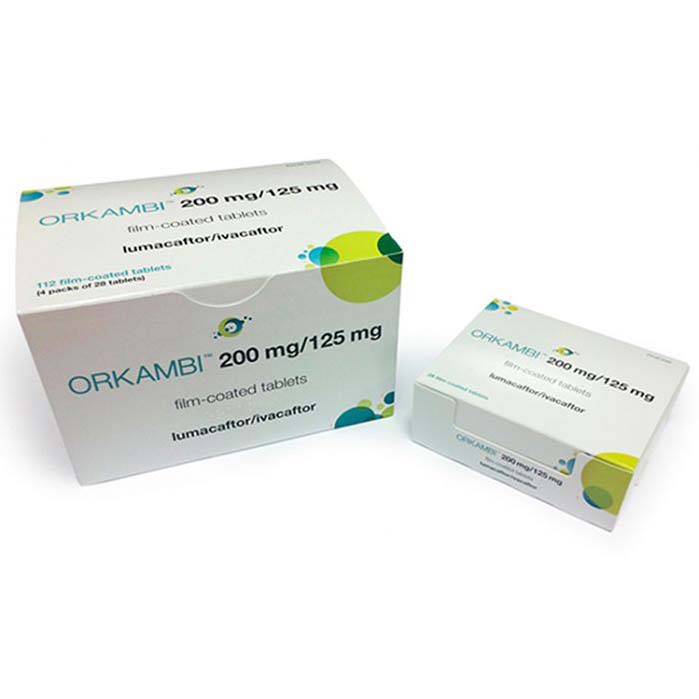


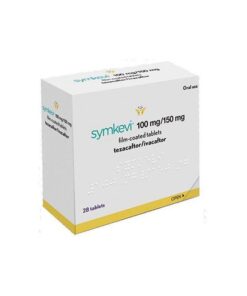


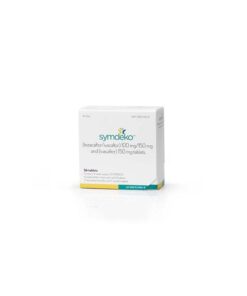
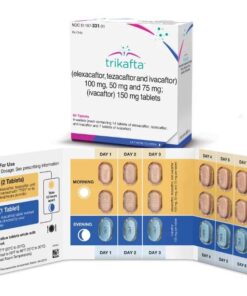
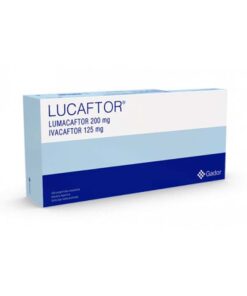

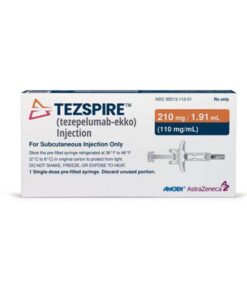
Reviews
There are no reviews yet.